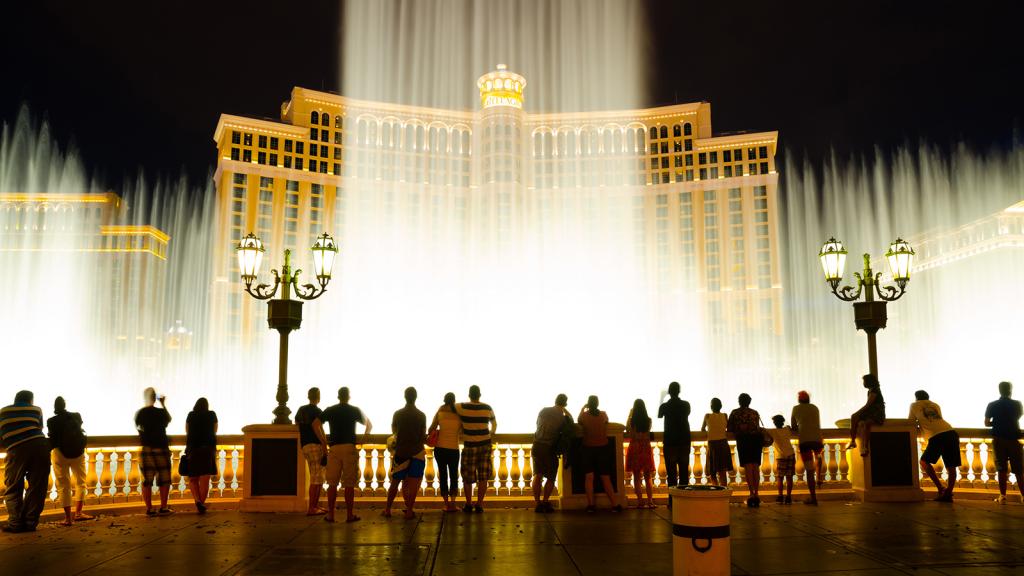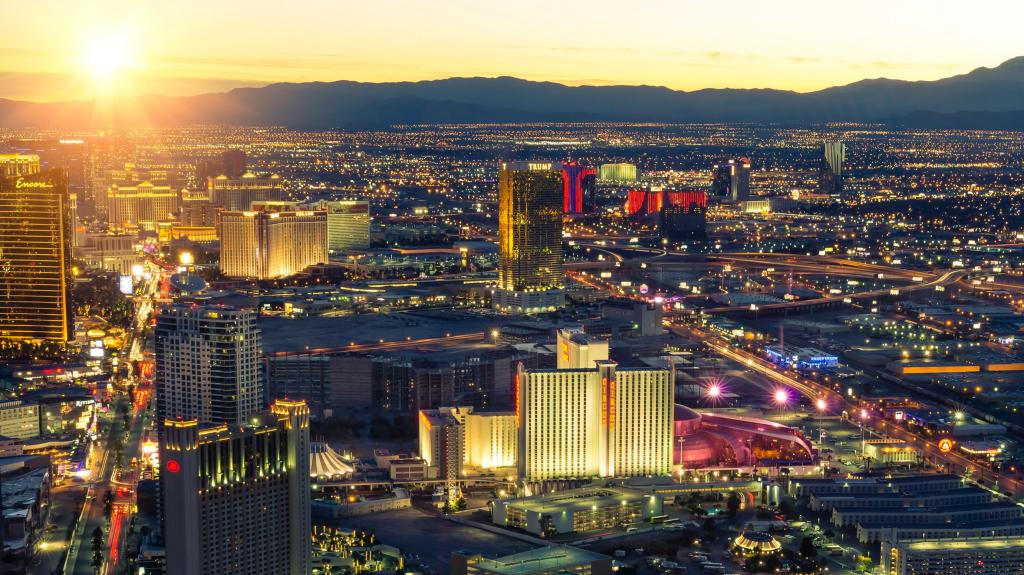Patricia Mulroy has been called “the water empress of Vegas.” For 25 years, she lead the Southern Nevada Water Authority, the agency responsible for keeping the taps running in a desert metropolis that was growing like the fat guy in the Monty Python skit. As I wrote yesterday, she was a force to be reckoned with.
Today, Mulroy’s name evokes a mixture of hatred and admiration among her fellow western water managers, environmentalists, and rural residents who have long opposed her proposal to import water from eastern Nevada to supplement Las Vegas’ main water source — Lake Mead, a reservoir on the Colorado River.
Mulroy retired from the water authority this winter and lasted all of two months before accepting a dual-position at the Brookings Institution in Washington, D.C., and Brookings Mountain West at the University of Nevada Las Vegas, where she is a senior fellow for climate adaptation and environmental policy.
I caught up with her recently for a conversation that ranged from climate adaptation to the California drought, rancher Cliven Bundy, and the day she thought Las Vegas had run out of water. Her message, in a nutshell: “I think there are some realities staring us starkly in the face. We need to focus on adapting.”
Q. Is it crazy to put a city like Las Vegas in the middle of the Mojave Desert?
A. Is it crazy to have the Jersey Shore? Is it crazy to have Oklahoma City where tornadoes destroy it and then you rebuild it? Is it ridiculous to have cities along the Mississippi, where the [Army Corps of Engineers] decides who gets flooded and who doesn’t and you cause massive problems? Is it ridiculous to have New Orleans? Share with me the one place in the United States where it is rational, sane, and safe to live.
Q. Buffalo.
A. Buffalo?
Q. Yeah, Buffalo, N.Y. And the upper Midwest.
A. Really? The upper Midwest, where flooding will be the norm? The upper Midwest has tornadoes. There’s no safe place.
If you look at it, we have no hurricanes, we have no tornadoes — we have no flooding, trust me. It’s easier to manage against a horrific drought than it is against a horrific weather event that comes through, destroys everything, and then you have to rebuild.
Q. The drought has been pretty horrific. What was the closest that Southern Nevada came to disaster on your watch?
A. 2002. In 2000, I took a resource plan to the [Southern Nevada Water Authority board of directors] that had a guaranteed 50-year water supply. In 2002, it had evaporated to nothing. We had 25 percent of normal precipitation [in the Colorado River Basin]. We were already using 325,000 acre-feet out of Lake Mead. Mead was going to drop below the elevation where we were going to be able to use it. The state of Arizona had put us on notice that it was going to be hit by a statewide drought, and that there were not going to be any additional resources that we were going to be able to bank for Nevada. We had nothing.
In Nevada, for the state engineer to sign a subdivision map, he predicates the water supply on our resource plan. So our resource plan was attached to every bond sale in Southern Nevada. Our resource plan was attached to every SEC filing. If that puppy has a hole in it, it’s over. I’ll never forget that morning. Every Monday morning, my senior staff and I would meet, and go over the week ahead. My deputy walked in that morning and she says, “Pat, we’ve got real problems.”
Q. And how did you respond?
A. Somebody once told me, and I’ve never forgotten it, “Never let a good crisis go to waste.” It was a great opportunity for us to do something we had wanted to do for a long time: Get [water] conservation out of the voluntary and into the mandatory. So we began to pay people to take their grass out. In the newer parts of the community, we banned grass in the front yard. Only 50 percent of the backyard could be grass. We put the community on a watering regimen.
At the same time, we knew that we needed to talk to the [other states that get water from the Colorado River]. The Interior Department had started the discussions that led to the 2007 shortage arrangement. It was quite a difficult journey, but the drought was getting worse. Every time people threatened to go to court, I just laughed. I went, “Really? How quickly do you think you’ll get through court? You really think that the legal process is going to be quicker than this drought has the ability to deepen?” That’s a pretty stupid notion.
Q. Given all the arrangements you’ve made since then to share the pain of water shortages among the states, could you go from being in great shape to being in desperate straits that quickly again?
A. Absolutely. But it won’t just be us this time.
Q. What about all the water that Southern Nevada has stored underground? Does that protect you?
A. We have a significant bank — probably around 360,000 acre-feet in our own bank and 600,000 sitting over in Arizona. But there are caveats on each one of those. Hydrologically, we can only take 40,000 acre-feet a year out of our bank, otherwise you’re going to start creating subsidence issues. In Arizona, the minute the [Central Arizona Project] has to short Arizona cities on what they can take out of the bank, we’re subject to the same restrictions. It’s just politically impossible to say to the city of Phoenix, we’re going to cut you back, but oh by the way, Las Vegas can continue to take what we want. The same holds true for California. There’s a limitation on what we can take back each year out of the California bank.
So how bad is it gonna get? How deep are the cuts gonne be? As maligned and screamed about as the in-state project has been — it’s there for that day. Even if you’ve invested in a desalter, [in a time of serious shortage], there’s nothing to exchange in Mead. What are you gonna exchange?
Q. What would you tell other cities about climate adaptation?
A. Don’t pretend that it can’t happen. We have a system with 60 million acre-feet of storage. Nobody believed in the ’90s — there was zero chance [that we were going to run out of water]. Don’t talk to me about probabilities any more.
You don’t have to build everything right away, but you have to play out in your own planning process and in your own head, what are the trigger points? Where does carrying the risk become so untenable that we have to build [climate defenses]?
Q. That’s a tough sell for towns that aren’t feeling the heat like Las Vegas is.
A. I think the U.S. is going to feel it this year. The drought in California is going to be a huge wakeup call. People who sit in North Carolina or Arkansas don’t think the drought in California is going to affect them — until they go grocery shopping. That one district in Southern California, the Imperial, is responsible for 11 percent of the country’s winter fruits and vegetables.
Q. Congress is obviously a lost cause, but do you feel like cities and states are getting good support from the Obama administration?
A. You have a lot of smart people with very little practical experience. What’s well-meaning becomes a disaster. In the tiniest microcosm, look at the now-folk hero Clive Bundy up in Mesquite. Clive did not wake up in 1995 and say, “I’m done paying the BLM grazing fees.” He was presented with terms and conditions with grazing to protect the desert tortoise that were anathema to him, having had his family ranch up there since the 1870s. The desert tortoise went on the endangered species list because of Las Vegas’ growth — and Clive Bundy is supposed to pay the price? Would you get a little ticked? Would you get a little upset? I fully understand, and when you’re as stubborn a mule as he is, that’s exactly how you’re going to act.
The administration is making same mistake on climate as other issues: They’re using broad-brush strokes. Strategically, they need to repool those resources and focus on science. The greatest investment the federal government could make right now would be to provide the financial resources that NOAA and NASA need to refine the science around predictability of climate and weather. Looking in the rear-view mirror doesn’t do us any good. We’re walking into such uncertainty. We don’t know how this turns out.



